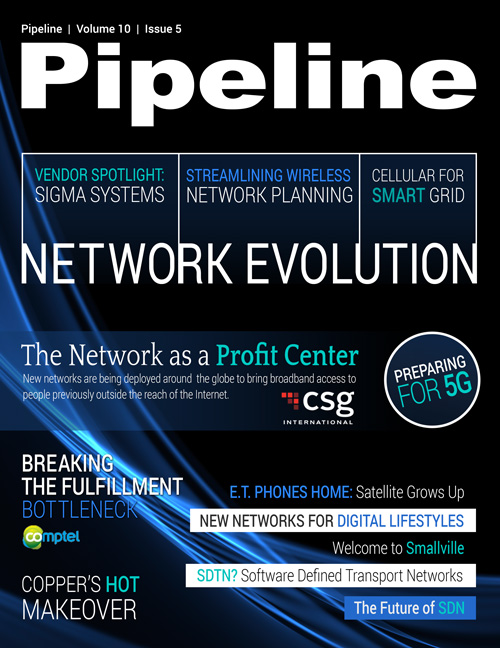Copper's Hot Makeover Delays Demand for Fiber Investment
VDSL2
VDSL2, the latest version of VDSL, is the access technology by which fiber is deployed near the premises (otherwise known as FTTC or fiber to the cabinet), and it gets ultrafast broadband speeds
out of existing copper originally installed to run old-fashioned home phone service. For the first mile VDSL2 uses Ethernet as its multiplexing technology, making the network simpler and easier
to operate, but although VDSL2 can run up to 100 Mbps, crosstalk, or noise interference, on copper lines can slow it down.
Vectoring and bonding
The problem with those tried-and-true twisted copper pairs is that they’re all bunched into one large line. And because the pairs operate in such close quarters, crosstalk is created on neighboring lines. Vectoring is the technology by which crosstalk is eliminated for a clearer signal that’s good enough to deliver the fastest broadband around.
“There can be hundreds of pairs all packed together,” says Vanhastel. “Vectoring works just like noise-canceling headphones to remove crosstalk, which had been the limiting factor to VDSL.”
Now those old lines are capable of serving as a means to deliver lightning-quick broadband straight into the home, something operators can use to supply internet speeds that are fast enough to compete with those of cable.
“It’s a simple concept, but [implementing it] is quite complex,” Vanhastel explains. “But the results are really good—up to 100 Mbps at 1,200 feet.”
In April, Alcatel-Lucent and China Telecom announced a successful field trial of vectoring technology to complement the CSP’s national fiber-optic network, which provides high-speed broadband to its DSL customers.
With VDSL2 bonding technology, two standard DSL lines can be combined to create a pipe with double the bandwidth. Bonded lines also increase the distance at which speeds can be maintained, allowing operators to connect a larger number of subscribers to an individual cabinet.
However, even with vectoring technology the speed of the bundle is limited to the highest speed of the clearest copper pair in the bundle. And though 100 Mbps is significant, it’s nothing compared to the 1,000 Mbps that gigabit-age customers will demand.
Getting faster with G.Fast
In collaboration with Telekom Austria last summer, Alcatel-Lucent also conducted the first successful trial of G.fast, delivering speeds equivalent to one gigabit per second (Gbps). Perhaps more importantly, G.fast can be installed by subscribers.
Although it’s still in the very early stages of deployment, G.fast increases the amount of spectrum that’s utilized: as opposed to VDSL2, which operates on 17 MHz or 30 MHz, G.fast works on 106
MHz or even 212 MHz—wider spectrum, more bandwidth. And though it’s years away from commercial deployment, the International Telecommunication Union (ITU) moved a step closer toward formalizing
the G.fast standard at its July meeting in Geneva.
“G.fast is an important standard for service providers globally,” remarked Tom Starr, chairman of the ITU group that covers Networks, Technologies and Infrastructures for Transport, Access and Home and is heading up the agency’s G.fast initiative. “Service providers will be able to deliver fiberlike performance more quickly and more affordably than with any other approach.”
POTS gets a makeover too
As these VDSL, vectoring, bonding, and G.fast technologies continue to cannibalize copper lines to the home, plain old telephone service, or POTS, will inevitably get its own new-millennium makeover. Digital and VoIP (Voice over IP) services will increasingly emerge as the landline telephony standard.
Alcatel-Lucent’s Stefaan Vanhastel says that by 2020 a “sizeable” part of the population that still wants or needs legacy POTS will have it delivered by digital means rather than copper.



















